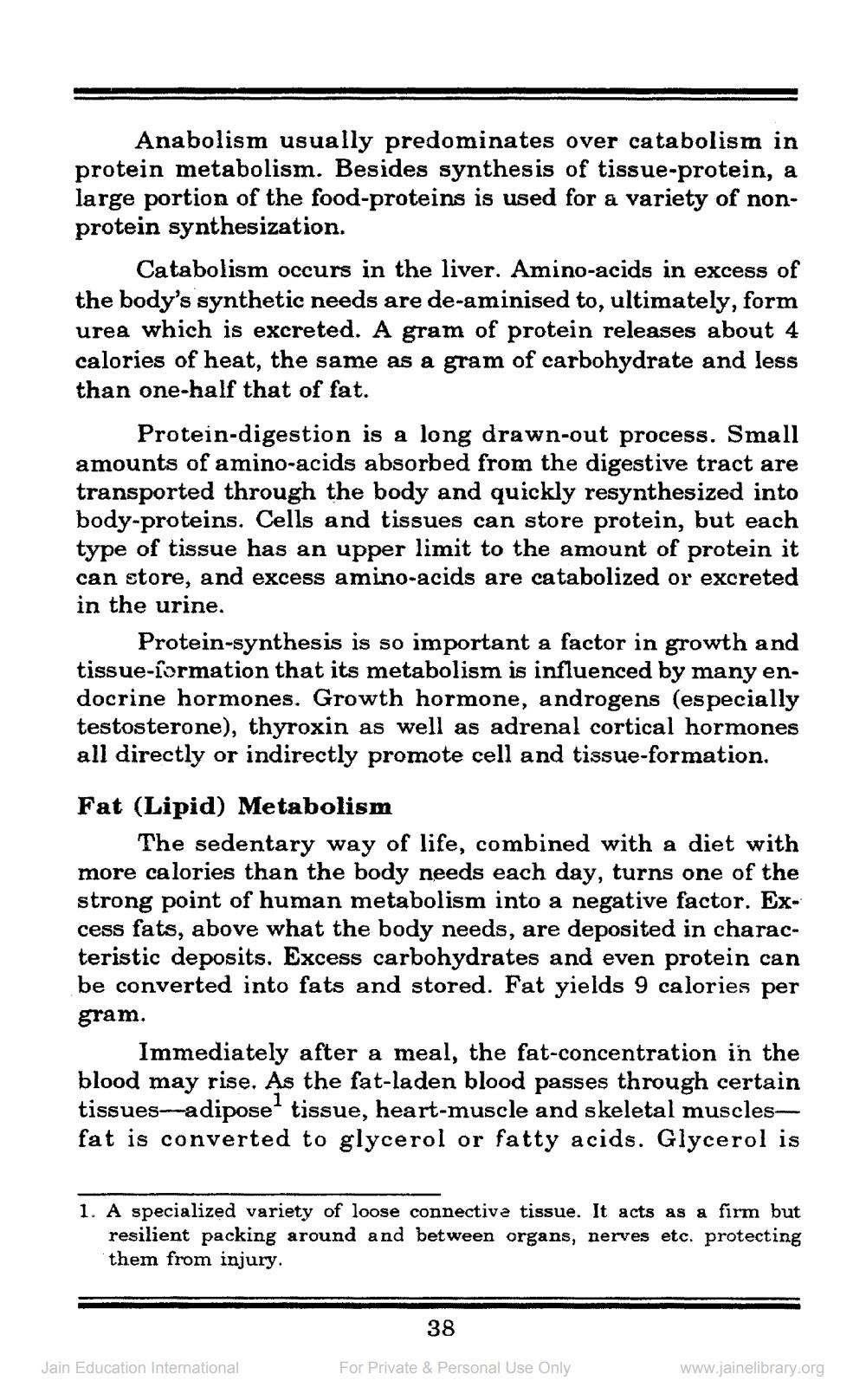________________
Anabolism usually predominates over catabolism in protein metabolism. Besides synthesis of tissue-protein, a large portion of the food-proteins is used for a variety of nonprotein synthesization.
Catabolism occurs in the liver. Amino-acids in excess of the body's synthetic needs are de-aminised to, ultimately, form urea which is excreted. A gram of protein releases about 4 calories of heat, the same as a gram of carbohydrate and less than one-half that of fat.
Protein-digestion is a long drawn-out process. Small amounts of amino-acids absorbed from the digestive tract are transported through the body and quickly resynthesized into body-proteins. Cells and tissues can store protein, but each type of tissue has an upper limit to the amount of protein it can store, and excess amino-acids are catabolized or excreted in the urine.
Protein-synthesis is so important a factor in growth and tissue-formation that its metabolism is influenced by many endocrine hormones. Growth hormone, androgens (especially testosterone), thyroxin as well as adrenal cortical hormones all directly or indirectly promote cell and tissue-formation,
Fat (Lipid) Metabolism
The sedentary way of life, combined with a diet with more calories than the body needs each day, turns one of the strong point of human metabolism into a negative factor. Excess fats, above what the body needs, are deposited in characteristic deposits. Excess carbohydrates and even protein can be converted into fats and stored. Fat yields 9 calories per
gram.
Immediately after a meal, the fat-concentration in the blood may rise. As the fat-laden blood passes through certain tissues--adipose tissue, heart-muscle and skeletal musclesfat is converted to glycerol or fatty acids. Glycerol is
1. A specialized variety of loose connective tissue. It acts as a firm but
resilient packing around and between organs, nerves etc. protecting them from injury.
38
Jain Education International
For Private & Personal Use Only
www.jainelibrary.org




